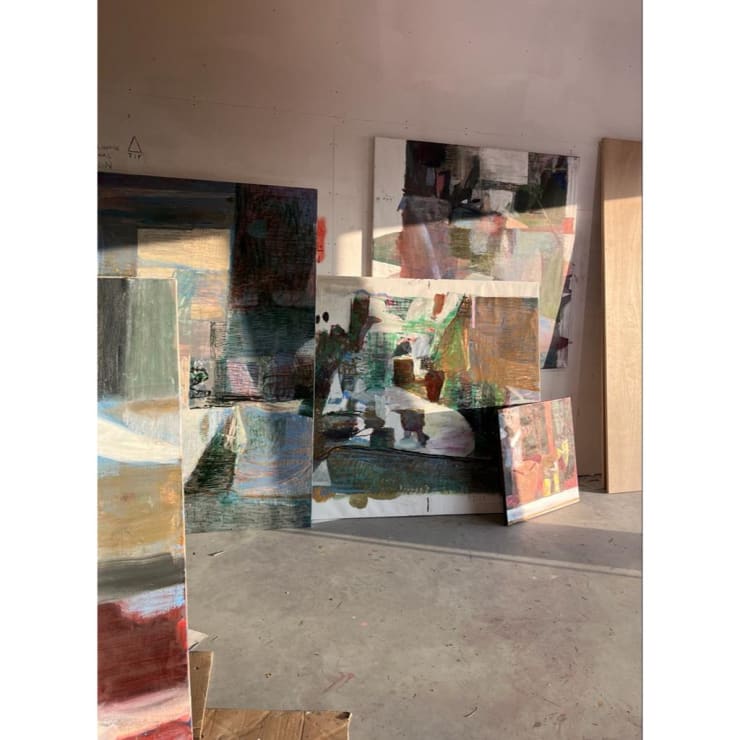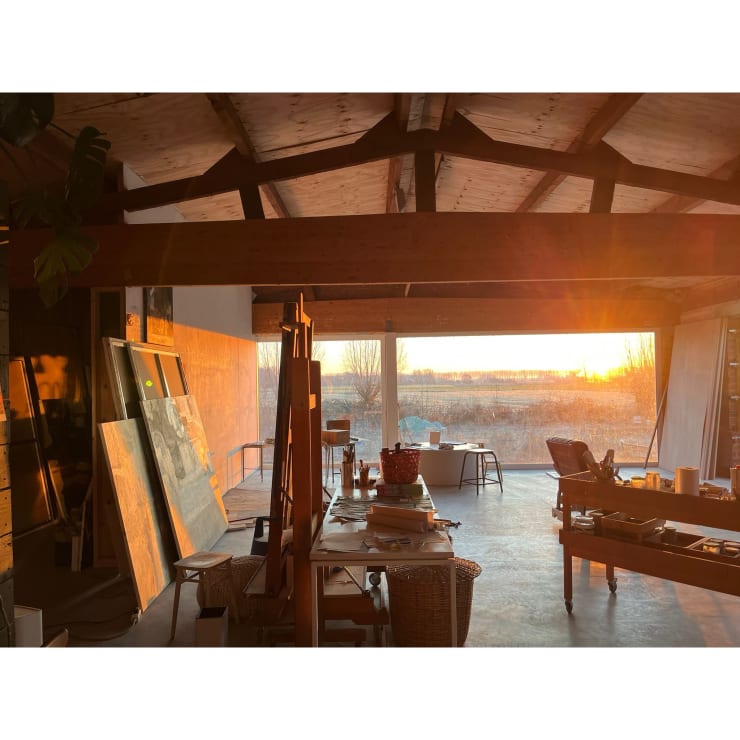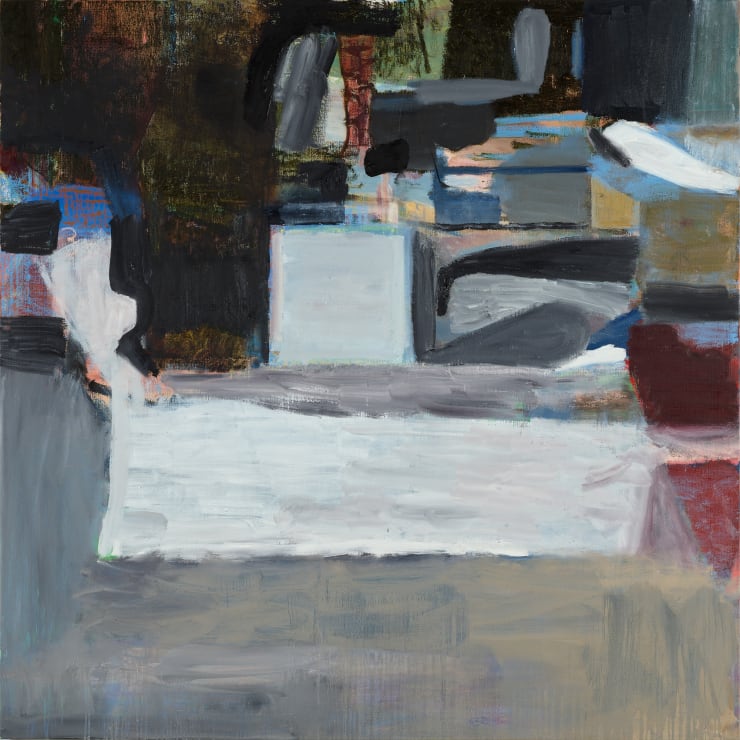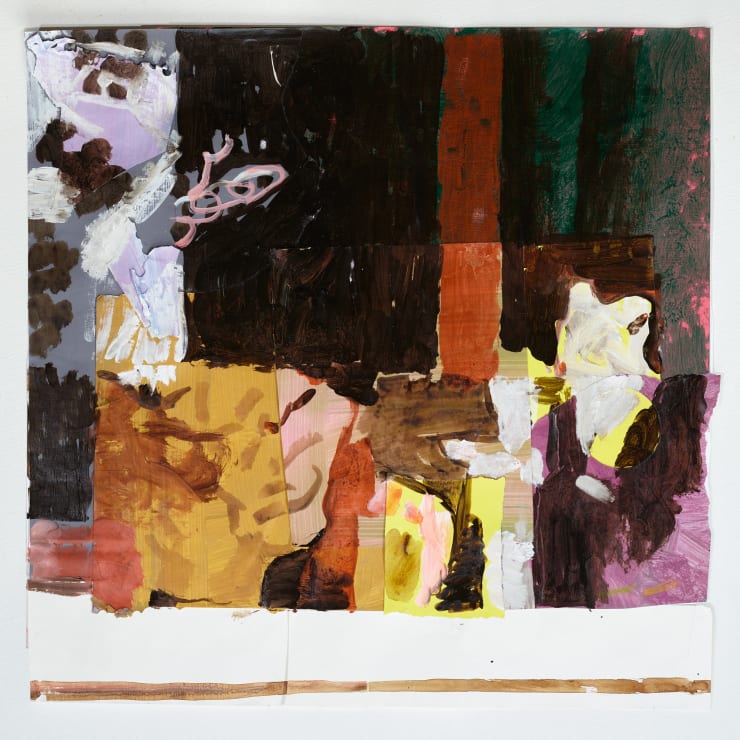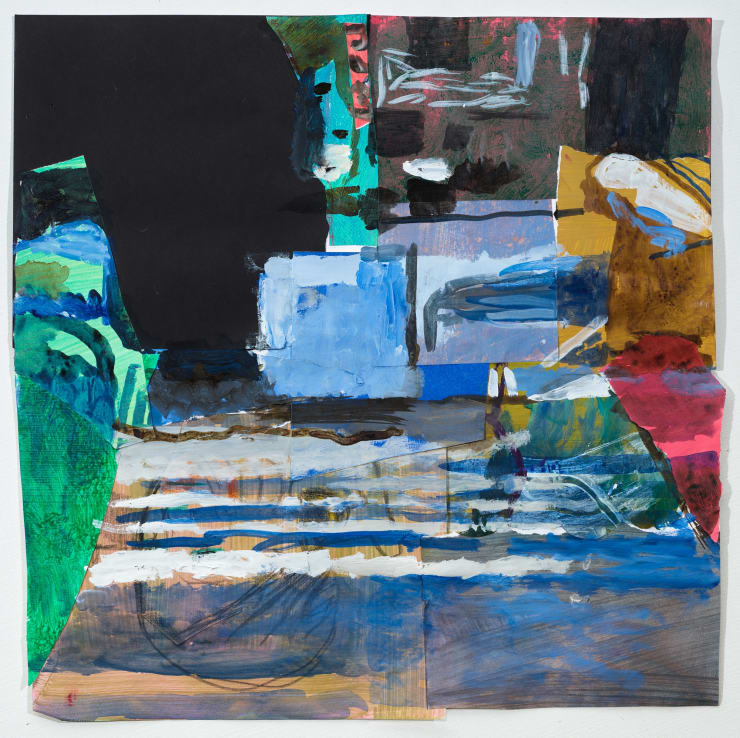Living and working in Belgium, Piet Raemdonck's contemporary oil paintings focus on the still life, the landscape and the interior, whilst also exploring the relationship between the naïve and the classical, as well as abstract geometric art and distinctive romanticism. Ahead of his upcoming solo show, Bij Dachlig, we sat down with Piet to discuss his new body of abstract landscape and inetior paintings.
OTOMYS: Can you tell us about the ideas and themes behind this new body of work?
Piet Raemdonck: My artworks show the home I live in, celebrating the everyday wonder of these intimate spaces. Architecture and interiors invite such exciting and dynamic imagery and geometry. Within my paintings there is often the sense that the viewer is ‘walking towards the light’, as the image frames the light source through a composition of abstracted geometric forms.The power of geometry is that it often arises from chaos. Both BEGIN VAN DE DAG I & II show an undefined ‘square within a square’. This feature creates the illusion of depth, as the viewer is drawn towards the light of the central square. ZIGZAG, however, has a chaotic juxtaposition of triangles. Within this composition, the focal point is less obvious as shapes and colours fold into each other. Geometry has a magical power that I take advantage of within my paintings. Geometric art can unveil such magic and energy.
OTOMYS: Last time we spoke with you, the importance of Goethe’s colour theory within your practice was discussed. Does phenomenology have a role in the construction of your oil paintings?
Piet Raemdonck: I try to experience and observe my surroundings with an open mind, watching the environment without subjective thought. I believe that observing in itself can be an art form. It is a meditative experience that allows you to remove the presuppositions that dictate our understanding of objects, form and space. There is a longing for abstraction at play inside me, but at the same time there is the thrill of lived experience and the nuanced world around me. It takes both of these experiences to create my paintings.
OTOMYS: These new works appear to depict organic impressions of interiors; large areas of white covered in dynamic clusters of colour seem to depict an assortment of objects on a table. How do you construct your compositions?
Piet Raemdonck: There was a time where I would meticulously compose still lives to paint, overthinking the placement of every object. In this series the compositions I engage with are very much ‘found’. These works are created organically, derived from a situation or snapshot that caught my eye. I do not move the clutter and I do not re-arrange anything; I respect the objects as the way they are, just as life has formed them. Many of these situations I find within my studio.
OTOMYS: You have previously discussed the influence of Italian painter Giorgio Morandi within your practice. What influence did Morandi have within this body of work?
Piet Raemdonck: Every painting that resembles a still life has a dialogue with Morandi. I think he changed the perception of the still life genre. Morandi is far more than a still-life painter. He is so much more than ‘bowls and bottles’, pushing the boundaries of abstraction. Morandi is a constant source of inspiration for me. He is an artist who has not left my mind, standing beside me as I work. Paul Klee is another artist that has had a similar impact.
The other day I mentioned Morandi to an artist friend. We were discussing portrait painting, not still life! When drawing or painting a person, our relationship to the sitter often interferes with our representation of them. Rarely we are able to simple observer the face in front of us. I think that Morandi championed an objective and unpolluted way of seeing. His practice demonstrates the beauty and purity of humble observation. You very much feel him watching back when you observe his works. A Morandi painting is a manifestation of pure observation.
OTOMYS: Many of your works exhibited at Otomys in recent years depict bright impressions of outdoor scenes. Within this body of work, there has been return to a darker, more sobering pallet common in earlier works, such as Bye Bye Birds (2015) and Juggler’s Patio (2012). Is there a dialogue between your old and new works?
Piet Raemdonck: I tend to embrace all colours, not wanting to limit myself with a specific colour scheme. However, the dialogue between light and dark, and between colour and non-colour, permeates my practice. When I mix colours I feel like a Dervish dancing around in circles, as the colours constantly influence one another. Sobering the colour palette can allow a greater focus on the play of light. In this series there are a few works that I would call ‘pearly grey’, as in ‘grey that is full of colour’. The closer you look at this paintings, the more colours appear. OPENING is the clearest example of this effect, as when you look closely at the work a palette of vibrant colour opens up.
OTOMYS: The title of your exhibition translates to ‘By Daylight’ in English. How do you engage with light within your practice?
Piet Raemdonck: I’m fascinated by the power of light and shadow. Light, or the absence of light, can transform the appearance of matter. Light and shadow live their own life. One of the greatest thrills of living in the countryside is how I am able to observe light. There is no light pollution here; sunrises are pure and undisturbed and moonlight is strong and bright.
Most of my favourite artists engage with light some way or another. When I observe my own practice I see a luminosity at the core of my work. In this show it is clear that there are objects depicted within my paintings, however, these objects are only loosely defined. This obscurity is an homage to the power of light. For example, a lemon without light will be as black as the shadows that surround it. Light allows for colours, just as darkness allows for ambiguity. Painterly I am a son of Valázques. I find great beauty in shadows and darkness. When natural light fails me I use very little electric light, instead opting for candles and oil lamps.
Bij Dachlig will be on display until 19 May, 2023 at Otomys. Interstate and international collectors may view the virtual art exhibition online via the online Viewing Room here.
April 18, 2023
